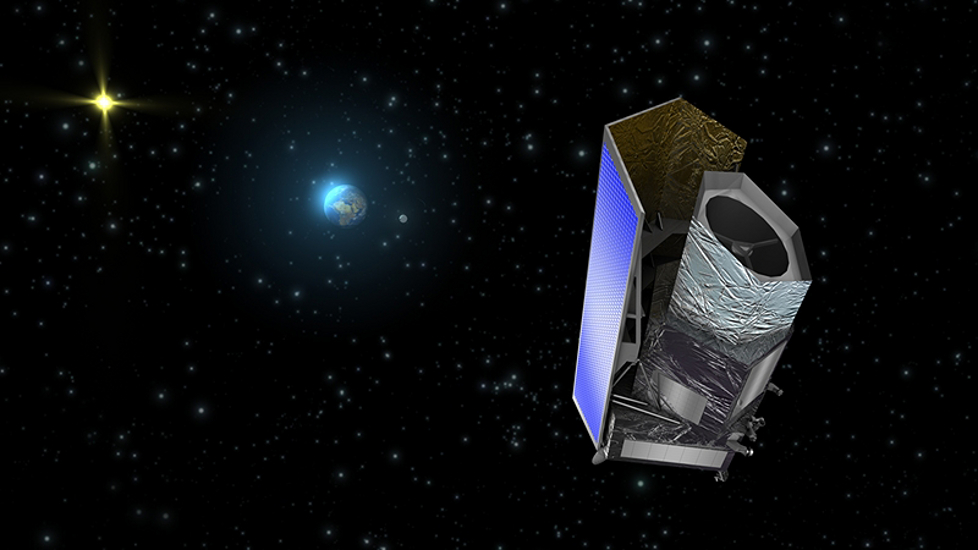
 Credit: ESA/C. Carreau
Credit: ESA/C. Carreau
Shot in the Dark
Most of our Universe is made up of dark stuff. The gravitating material in the Universe is mostly in the form of "Dark Matter", something that seems not to radiate any form of electromagnetic energy, but which has mass. No one really knows what Dark Matter is, but it makes up about one quarter of the mass-energy of the Universe (normal atoms, for comparison, only make up about one twentieth of the Universe). Though controversial when first posited by Fritz Zwicky in the 1930's, the existence of dark matter is now generally accepted. But the bulk of our Dark Universe is composed of something even stranger called "Dark Energy", a force which apparently is causing the Universal expansion to accelerate. Since the gravity of Dark Matter acts to slow the expansion, Dark Energy is sort of "anti-Dark Matter", or an "anti-gravitational" force. Evidence of Dark Energy was first discovered in the 1990's and as such Dark Energy has had a short but heralded history. We have even less understanding of Dark Energy than Dark Matter, which is an impressive ignorance since Dark Energy makes up more than 70% of the Universe. Some believe Dark Energy is perhaps Einstein's "Cosmological Constant", a theoretical construct that Einstein considered his "biggest blunder". Or it may be some sort of strange quantum energy, or something we cannot even guess at present. The Euclid mission is designed to help shed some light on our Dark Universe and to see how Dark Energy and Matter shape the geometry of spacetime. Euclid is a European Space Agency mission with NASA participation, and will be launched in 2019 into a parking orbit at the second Lagrangian point (L2), some 1.5 million kilometers beyond earth. Euclid will carry a 1.2 meter telescope and an array of infrared and visible imaging and spectral detectors, and will make observations of distant galaxies to map out the history of the Dark Universe over the last 10 billion years.
Published: January 28, 2013
.
<
HEA Dictionary ● Archive
● Search HEAPOW
● Other Languages
● HEAPOW on Facebook
● Download all Images
● Education ● HEAD
>

Each week the HEASARC
brings you new, exciting and beautiful images from X-ray and Gamma ray
astronomy. Check back each week and be sure to check out the HEAPOW archive!
Page Author: Dr. Michael F. Corcoran
Last modified Tuesday, 27-Feb-2024 10:13:23 EST


